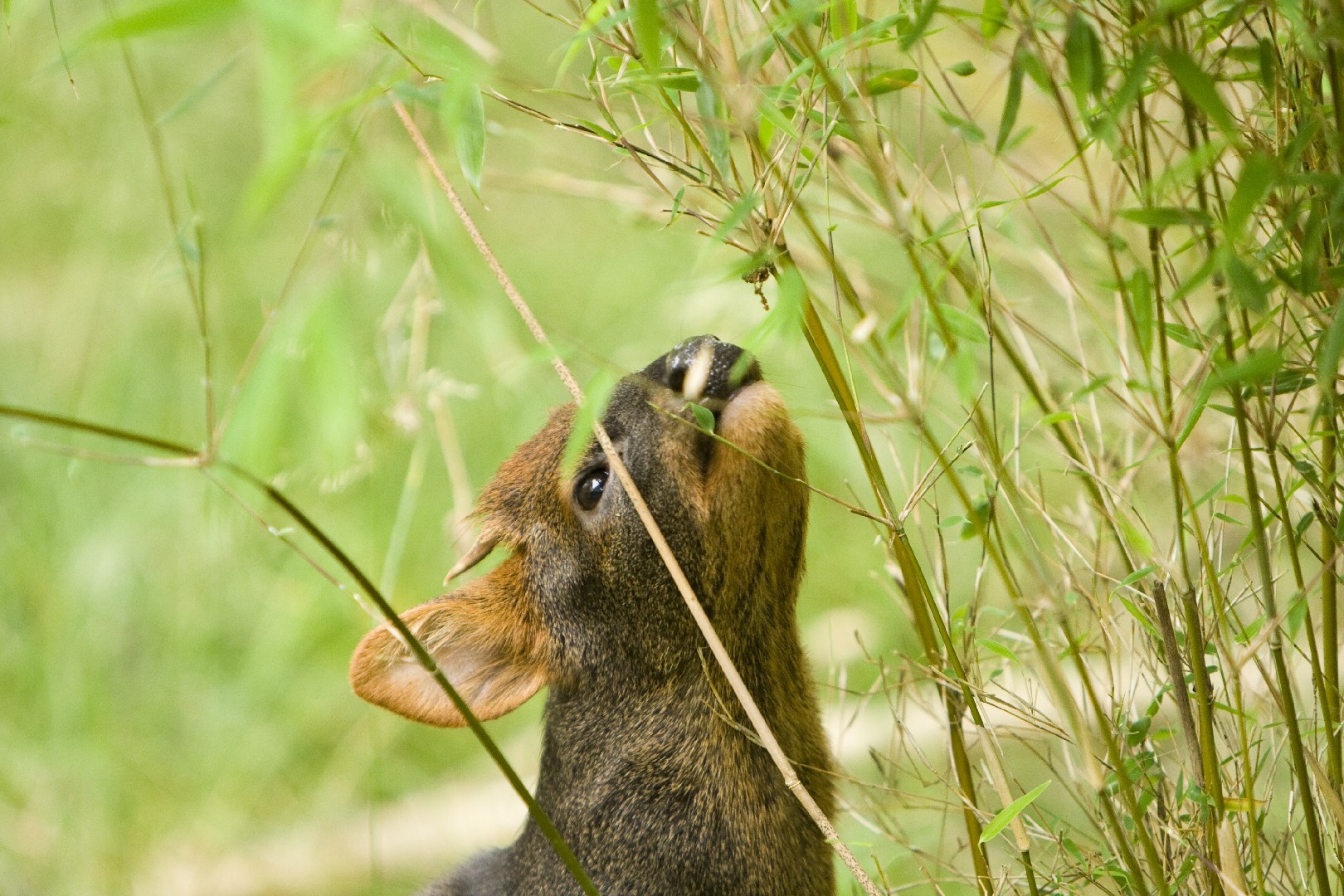Southern pudú
A species of Pudús, Also known as Chilean pudú Scientific name : Pudu puda Genus : Pudús
Southern pudú, A species of Pudús
Also known as:
Chilean pudú
Scientific name: Pudu puda
Genus: Pudús
Content
Description General Info
Description
, with the southern pudú being slightly larger than the northern pudú. It has a stocky frame supported by four short and slender legs. It is 32 to 44 cm (13 to 17 in) high at the shoulder and up to 85 cm (33 in) in length. Pudús normally weigh up to 12 kg (26 lb), but the highest recorded weight of a pudú is 13.4 kg (30 lb). Pudús have small, black eyes, black noses, and rounded ears with lengths of 7.5 to 8 cm (3.0 to 3.1 in). Sexual dimorphism in the species includes an absence of antlers in females. Males have short, spiked antlers that are not forked, as seen in most species of deer. The antlers, which are shed annually, can extend from 6.5 to 7.5 cm (2.6 to 3.0 in) in length and protrude from between the ears. Also on the head are large preorbital glands. Pudús have small hooves, dewclaws, and short tails about 4.0 to 4.5 cm (1.6 to 1.8 in) in length when measured without hair. Coat coloration varies with season, sex, and individual genes. The fur is long and stiff, typically pressed close to the body, with a reddish-brown to dark-brown hue. The neck and shoulders of an aged pudú turn a dark gray-brown in the winter. 
General Info
Lifespan
8-10 years
Diet
Southern pudú primarily feeds on leaves, fruits, and buds of various trees and shrubs. Its small stature enables it to reach lower vegetation, contributing to its diverse dietary intake. This species is known to occasionally supplement its diet with bark and fallen seeds.
Appearance
The Pudu puda, or southern pudú, is a small and compact deer with smooth, short fur. Its body coloration ranges from reddish-brown to dark brown, making it adept at camouflaging in its forest habitat. The southern pudú sports small antlers, which are generally straight and branch out at the tip. However, only males possess these antlers, making them distinguishable from the females. The southern pudú has a white belly, and its young bear white spots until maturity.
Behavior
Southern pudú is a solitary and elusive ungulate, exhibiting a crepuscular behavior pattern, indicating heightened activities during dawn and dusk. It feeds primarily on leaves, shoots, and fruit and exhibits a unique habit of standing on its hind legs to reach high vegetation. Southern pudú mark their territories with scent from cervical glands.
Population
Decreasing
